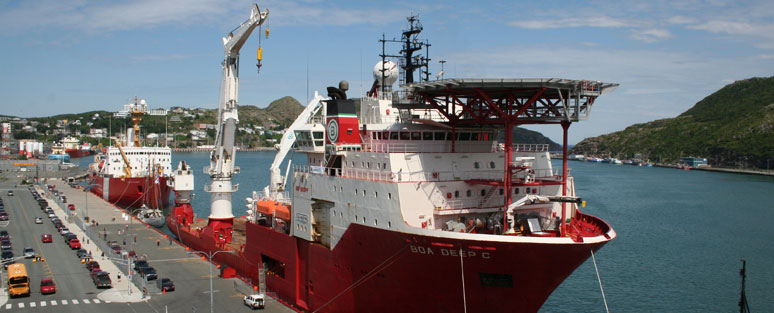Opponents of the TransCanada Energy East pipeline from Alberta to New Brunswick are looking preclude use of Atlantic shipping lanes to move oil to U.S. refiners.
With capacity up to 1.1 million bbl. daily, the proposed 2,800-mile pipeline would move bitumen oil from the Alberta tar sands region to refineries in eastern Canada, and via tanker from the port of St. John to U.S. refineries on the East and Gulf coasts.
That has the future potential for up to 281 tanker calls per year, “a five-fold increase in tanker traffic along parts of our coast,” said Anthony Swift, Canada project director for the Natural Resources Defense Council.
The NRDC and allied environmental groups outlined their strategy Tuesday in a telephone press conference and release of an NRDC paper. TransCanada filed its proposal in May 2016 with Canada’s National Energy Board, and now activists say they will press for both the Trudeau government and the Obama administration to look at “cumulative impacts” of the plan.
Coming on the heels of their successful campaign that led to Obama blocking the cross-border Keystone pipeline southbound toward the Gulf, environmental groups are looking to block TransCanada efforts to move diluted bitumen and light oil eastward, part of their overarching effort to stymie oil sands development.
At the state and local level, energy companies and activists fight over plans for rail, barge and pipeline transport to East Coast destinations, like the Bayway Refinery in Linden, N.J., which would be one destination for Alberta oil.
One plan to use a pipeline between Montreal and South Portland, Me., was blocked by the Maine city’s council, with an ordinance barring petroleum shipments from the waterfront. That measure is being challenged in federal court by the Portland Pipeline Corp. and American Waterways Operators, who argue city officials are illegally usurping the authority of the Coast Guard and other regulatory agencies.
With the Atlantic tanker route, opponents contend Canada and the U.S. are unprepared to handle an accident or spill involving dilute bitumen, with dire consequences for commercial fisheries like lobster and scallops and coastal communities.
They cited the 2010 oil pipeline spill near Marshall, Mich., where bitumen fouled waters around the Kalamazoo River and proved difficult to remove from the freshwater environment.
The U.S. Justice Department recently imposed $172 million in Clean Water Act fines and penalties on Enbridge Inc. in connection with that accident.
The paper quotes from a National Academy of Sciences report on the difficulty of dealing with diluted bitumen, or “dilbit” spills:
“Moreover, the risk of long-term environmental impacts is especially high because dilbit’s adhesion (essentially its ability to stick to other objects) is up to 100 times greater than that of conventional oils, because burned diluted bitumen creates ‘sticky’ and ‘easily submerged’ residues, and because dilbit does not quickly biodegrade.
“The NAS committee concluded that ‘the properties of diluted bitumen and weathered bitumen put such spills in a class by themselves,’ concluding that regulators and emergency responders do not have the necessary tools and techniques to address a tar sands diluted bitumen spill into water.”
“We cannot deal with a worst-case scenario for dealing with a diluted bitumen spill,” Swift said. “Our responders simply do not have the tools to address it.”





